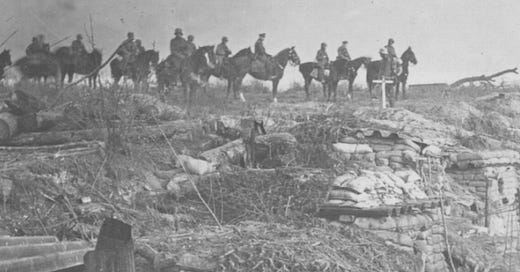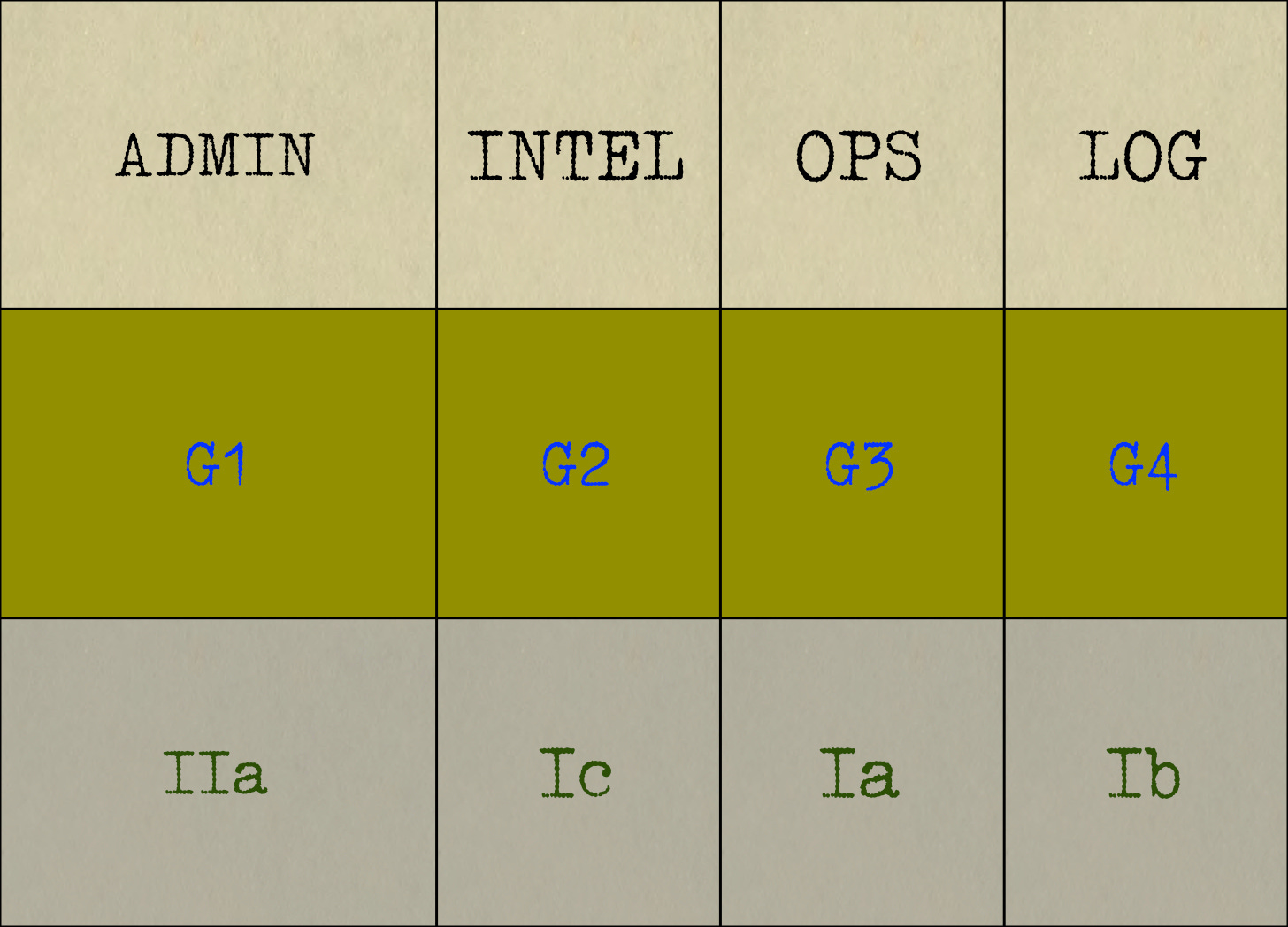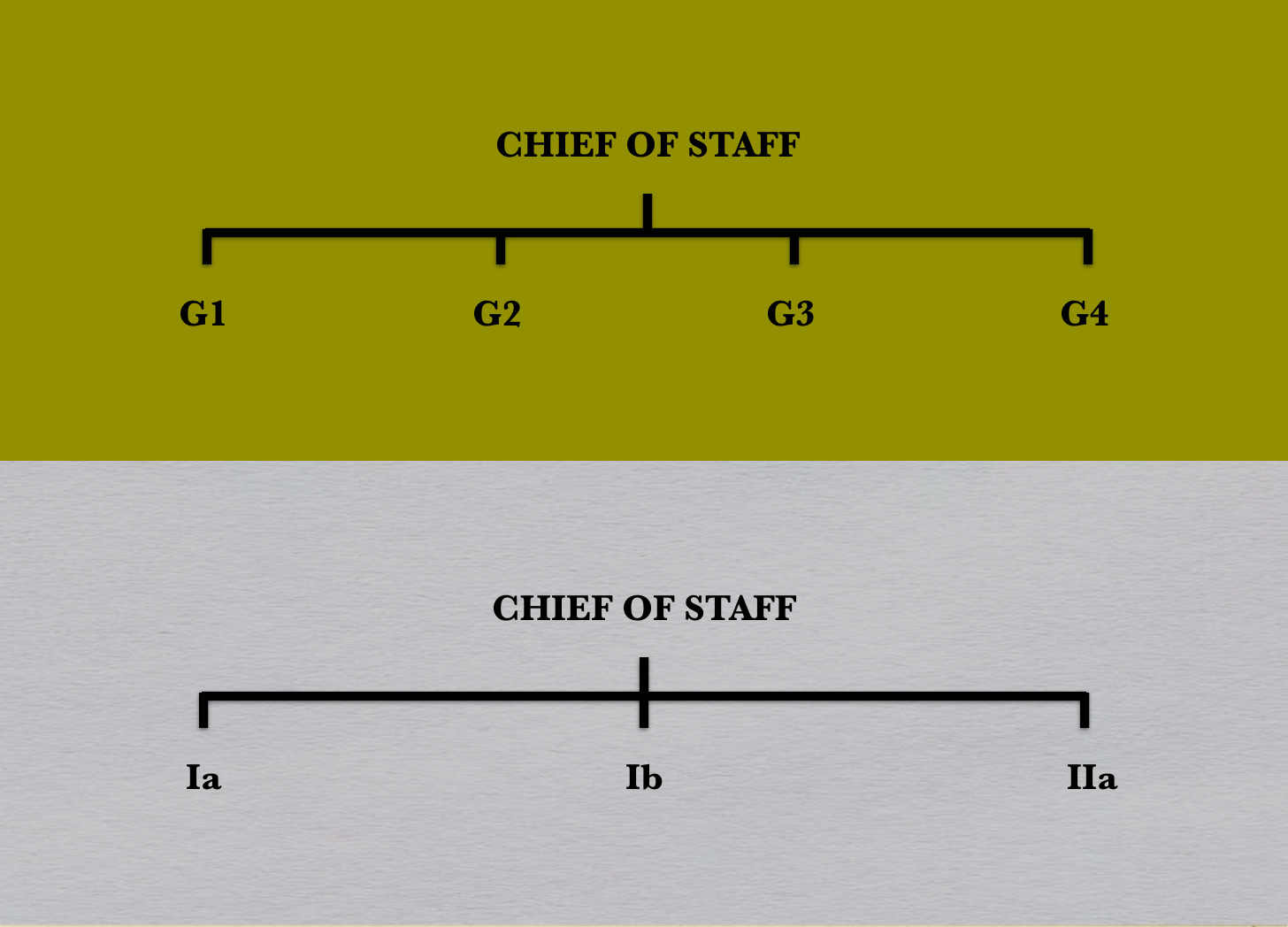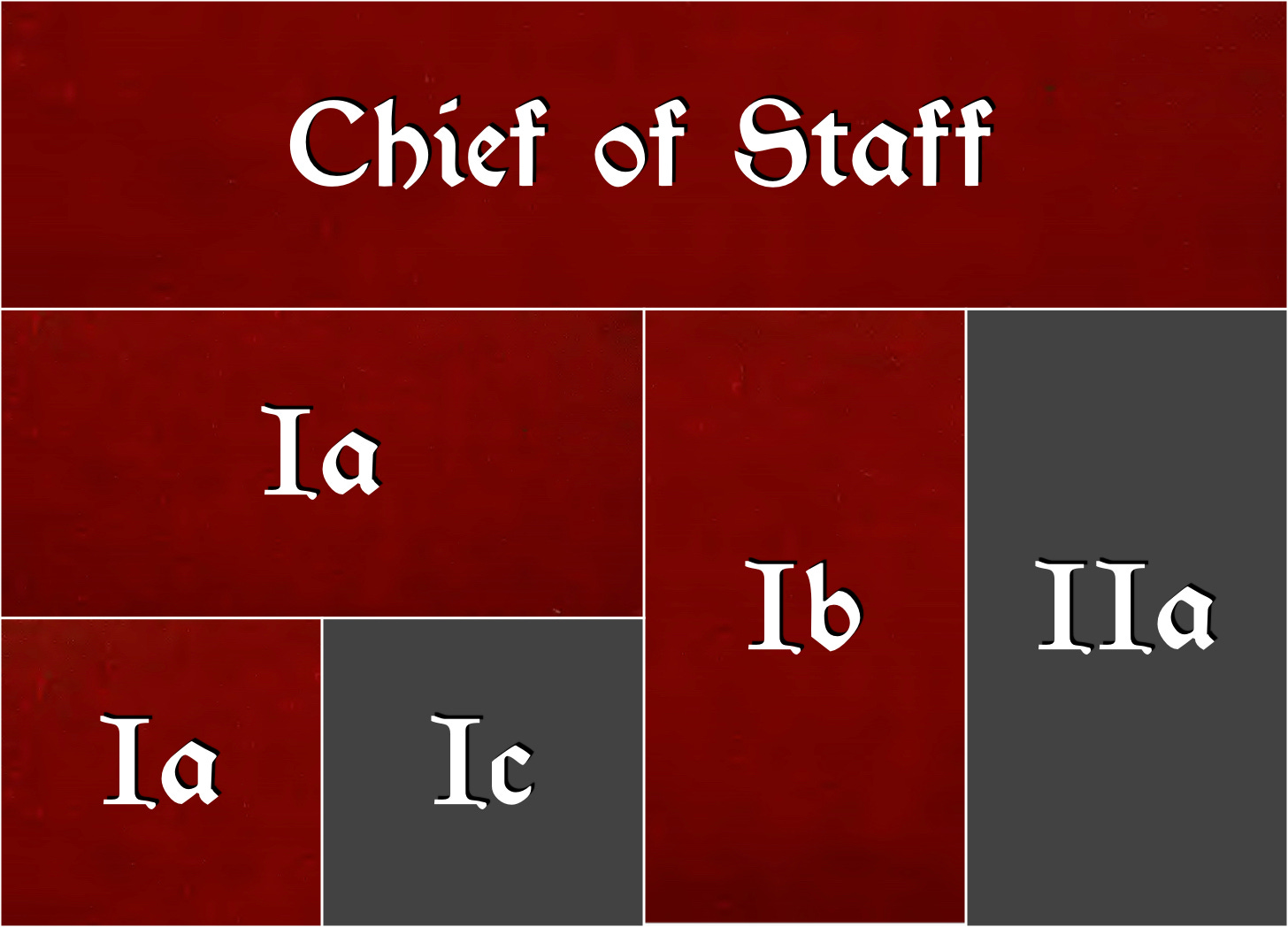The Senior Staff Officers of a Division
As seen by an American officer at the Kriegsakademie (1938)
On the eve of the Second World War, Captain Albert Coady Wedemeyer of the US Army attended the Kriegsakademie in Berlin. Soon after completing, in July of 1938, the two-year course for future officers of the German General Staff, he submitted a pair of reports. The first of these provided a précis of the approach that the German Army took to tactics, leadership, and organization. The second described, in considerable detail, Captain Wedemeyer’s observations of the curriculum he had followed.
In his second report, Captain Wedemeyer described the internal workings of the staff of an infantry division. However, as most of this took the form of short notes laid out on a table, present-day readers may find it hard to make sense of the organization depicted. With that in mind, I have repackaged the information in, what I hope will be, a somewhat less cryptic form.
At first glance, the structure of the staff of a German infantry division of 1938 followed the same basic pattern as its American contemporary. That is, the staff consisted of four sections: one for administration, one for intelligence, one for operations, and one for logistics.
Closer inspection, however, reveals two important differences, both of which involved the role of the operations officer. First, the operations officer of a German division also served as the chief of staff of that formation. Second, the intelligence officer of a German infantry division worked under the direct supervision of the operations officer.
The double-hatting of the senior staff officer of a division makes it easy to dismiss the formal subordination of intelligence to operations as a ‘distinction without a difference’. (‘With whom am I speaking, Herr Major, the operations officer or the chief of staff?’) Nonetheless, I can imagine occasions when the arrangement saved a great deal of time. In particular, the senior staff officer would have been able to work closely with the intelligence officer before he asked the logistics officer about the feasibility of a plan.
The location of the intelligence section within the operations section also allowed the rapidly expanding German Army of the late 1930s to economize on full-fledged General Staff officers. Ideally, the operations officer (Ia), the logistics officer (Ib), and the intelligence officer (Ic) wore the crimson branch-color that distinguished the demigods of the General Staff from lesser mortals. When, however, three pukka Generalstäbler of suitable rank and experience could not be found, placing the intelligence officer under the tutelage of the operations officer allowed the employment of promising apprentices in the former role.
The officer in charge of the administrative section (IIa) of the staff of a German division belonged to a distinct body of staff-work specialists, the Adjudantur. Where the officers the General Staff devoted their attention to all things operative, those of the Adjudantur looked after such things as pay, promotion, awards, and military justice. To put things another way, while Generalstäbler engaged the external world, officers of the Adjudantur dealt with internal matters.
For Further Reading:











Was the impact on maintenance positive or negative from this arrangement compared to our own? In general by the way I have always been in favor of smaller staffs, but I spent decades staring at staffs a teenager could see were bloated and did.,.
I seem to recall that another aspect of the staff was that the Adjudantur group, as well as other parts of the staff, were mostly Wehrmachtbeamten or Army Administration Officials. This also conserved the need for additional fully fledged General Staff Officers.